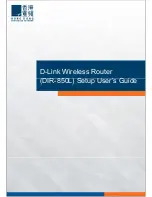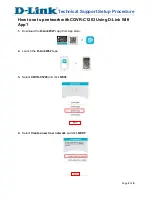
50
SWRS225B – FEBRUARY 2019 – REVISED MARCH 2020
Product Folder Links:
Applications, Implementation, and Layout
Copyright © 2019–2020, Texas Instruments Incorporated
7.1.4
Power Supply Decoupling and Bulk Capacitors
Depending upon routing resistors and battery type, TI recommends adding two 100-µF ceramic capacitors
to help provide the peak current drawn by the CC3135MOD module.
NOTE
The module enters a brown-out condition whenever the input voltage dips below V
BROWN
(see
and
). This condition must be considered during design of the power
supply routing specifically if operating from a battery. For more details on brown-out
consideration, see
.
7.1.5
Reset
The module features an internal RC circuit to reset the device during power ON. The nRESET pin must be
held below 0.6 V for at least 5 ms for the device to successfully reset.
7.1.6
Unused Pins
All unused pins can be left unconnected without the concern of having leakage current.
7.2
PCB Layout Guidelines
This section details the PCB guidelines to speed up the PCB design using the CC3135MOD Module. The
integrator of the CC3135MOD module must comply with the PCB layout recommendations described in
the following subsections to preserve/minimize the risk with regulatory certifications for FCC, IC/ISED,
ETSI/CE, and MIC. Moreover, TI recommends customers follow the guidelines described in this section to
achieve similar performance to that obtained with the TI reference design.
7.2.1
General Layout Recommendations
Ensure that the following general layout recommendations are followed:
•
Have a solid ground plane and ground vias under the module for stable system and thermal
dissipation.
•
Do
not
run signal traces underneath the module on a layer where the module is mounted.
•
RF traces must have 50-
Ω
impedance.
•
RF trace bends must be made with gradual curves, and 90 degree bends must be avoided.
•
RF traces must
not
have sharp corners.
•
There must be no traces or ground under the antenna section.
•
RF traces must have via stitching on the ground plane beside the RF trace on both sides.
•
RF traces must be as short as possible. The antenna, RF traces, and the module must be on the edge
of the PCB product in consideration of the product enclosure material and proximity.
















































